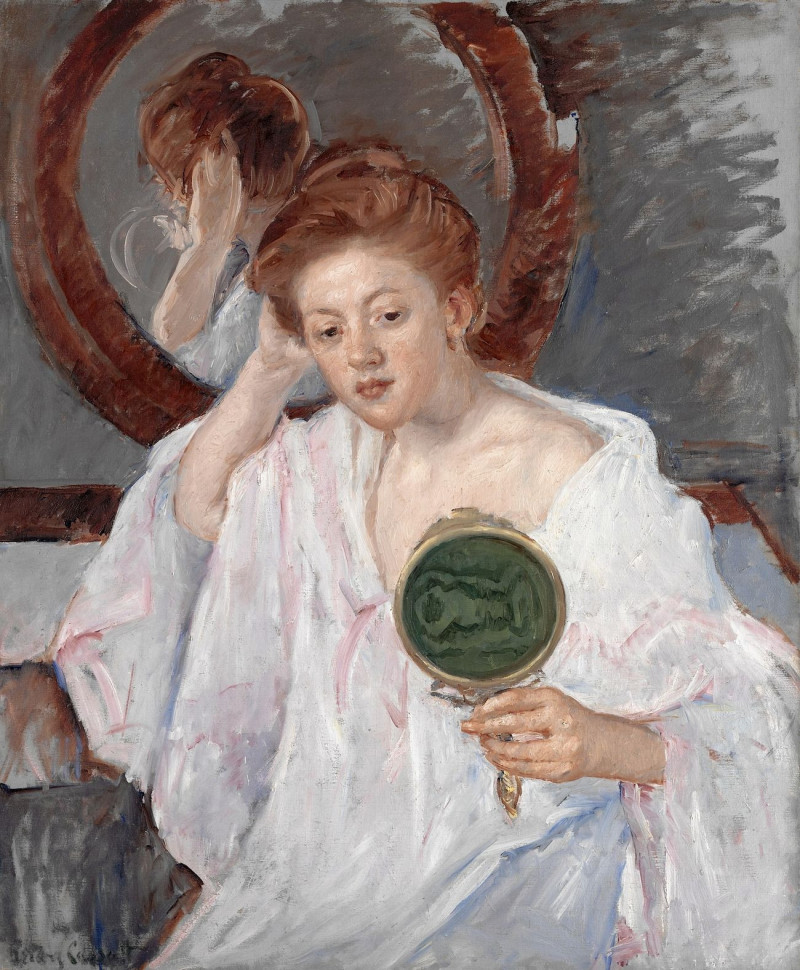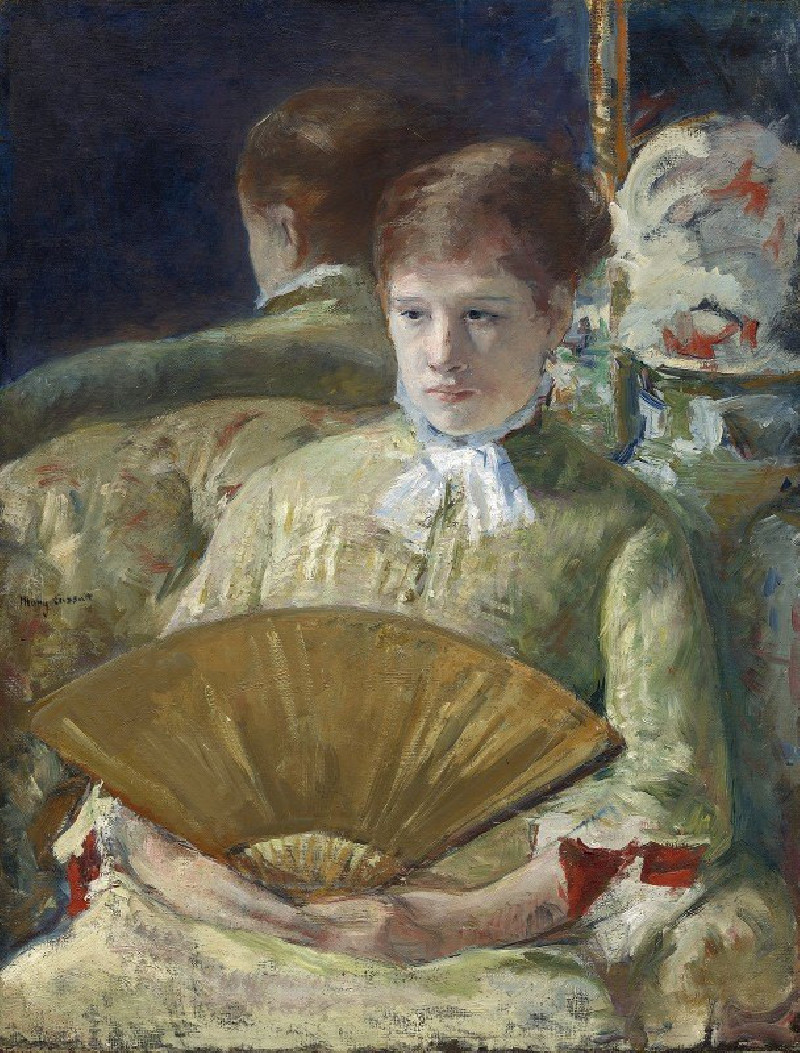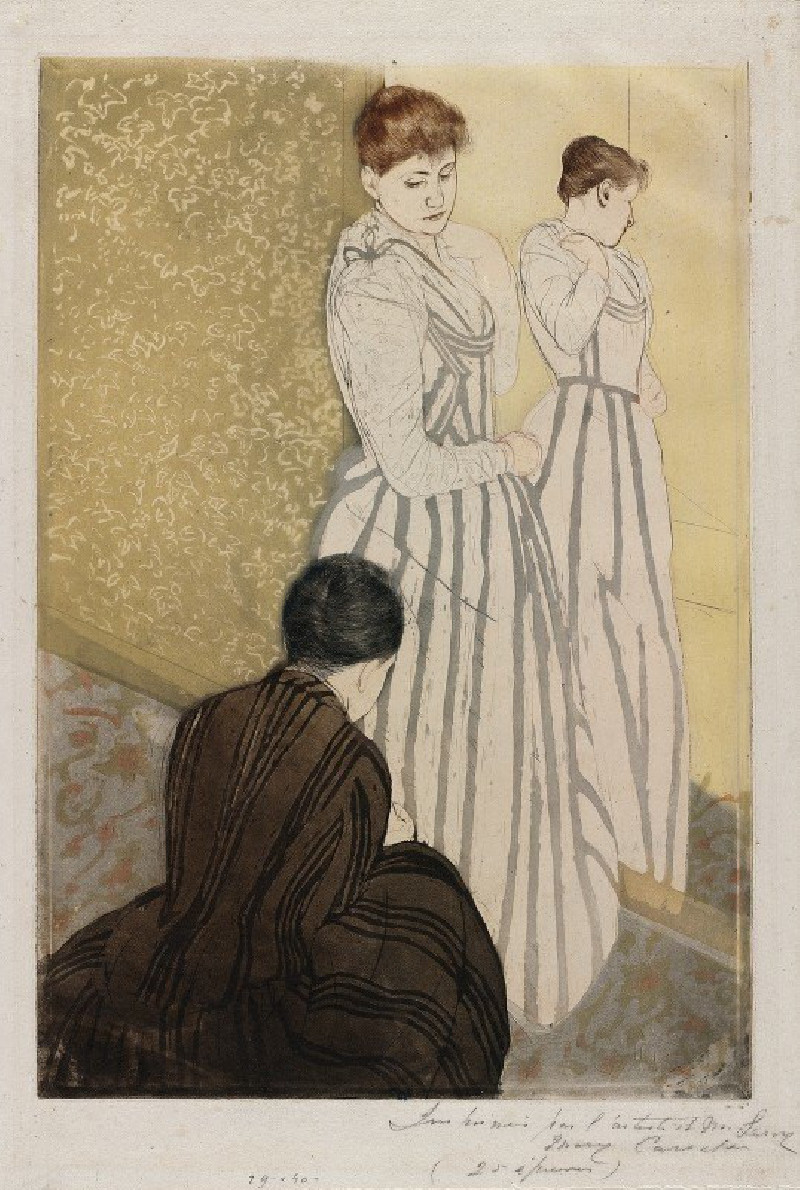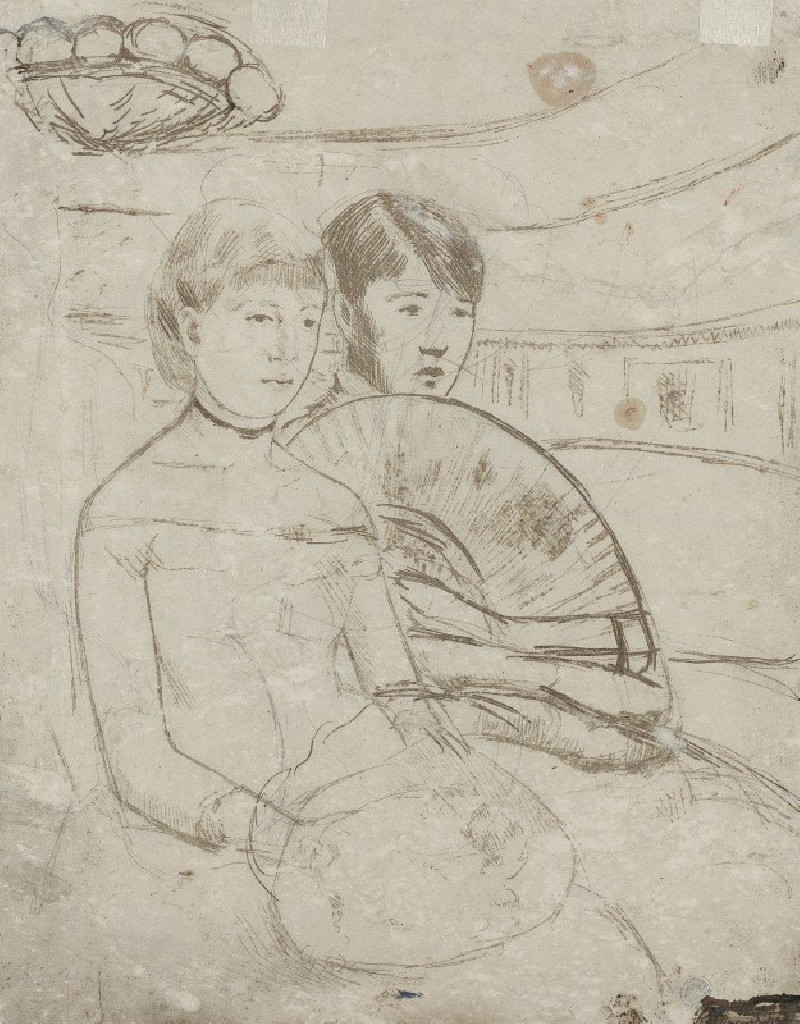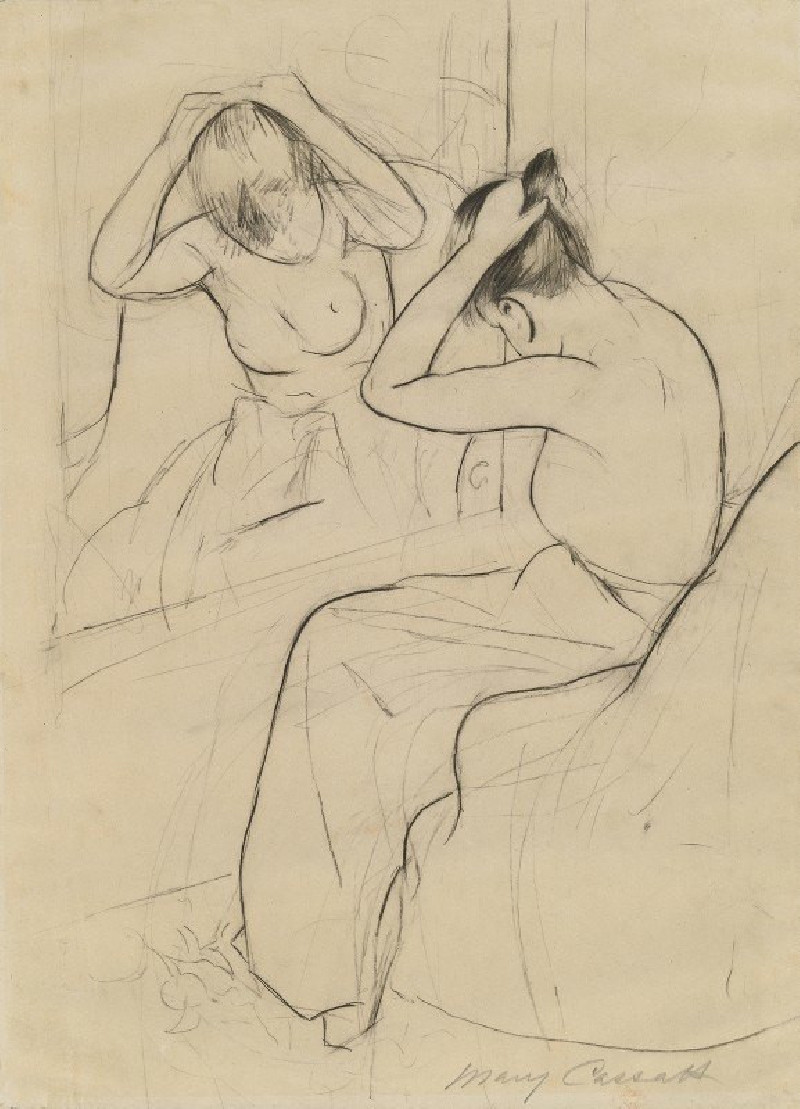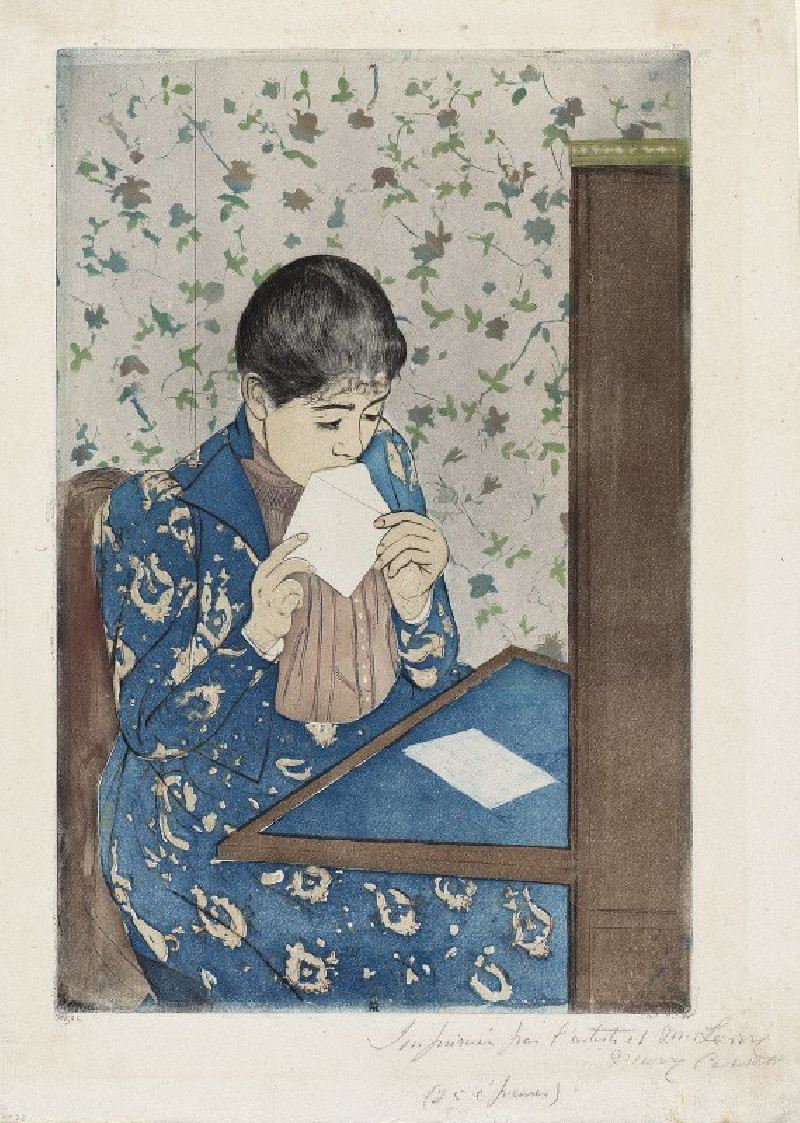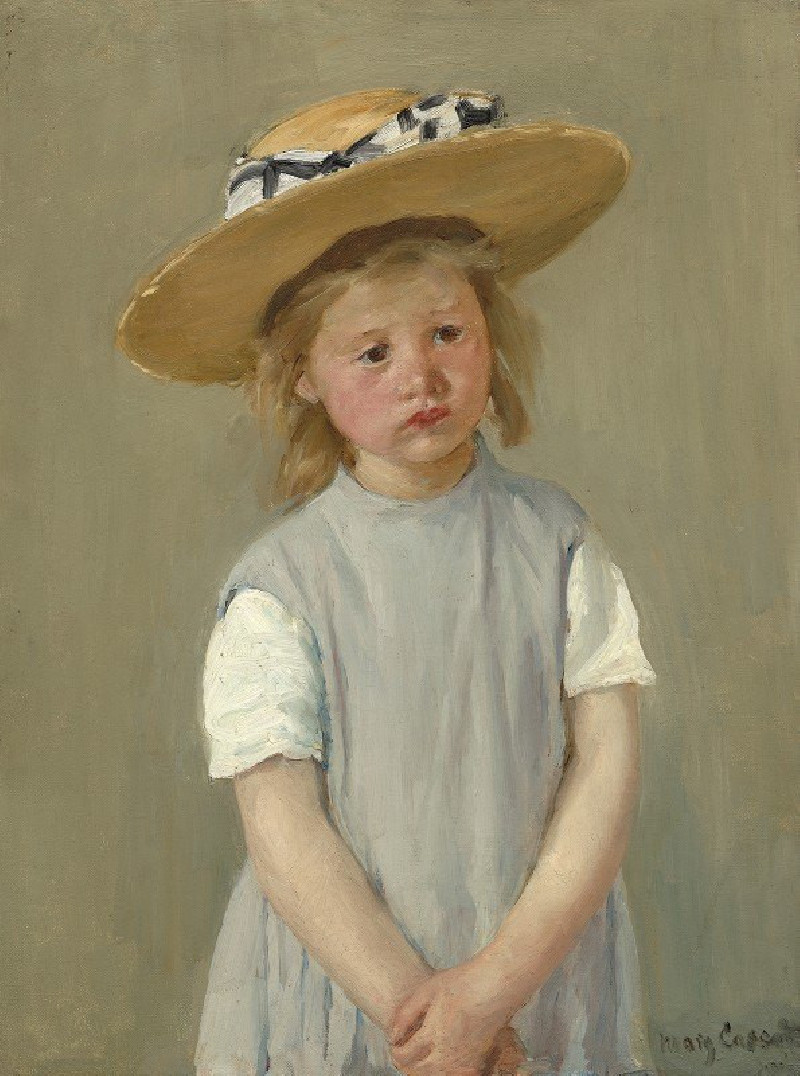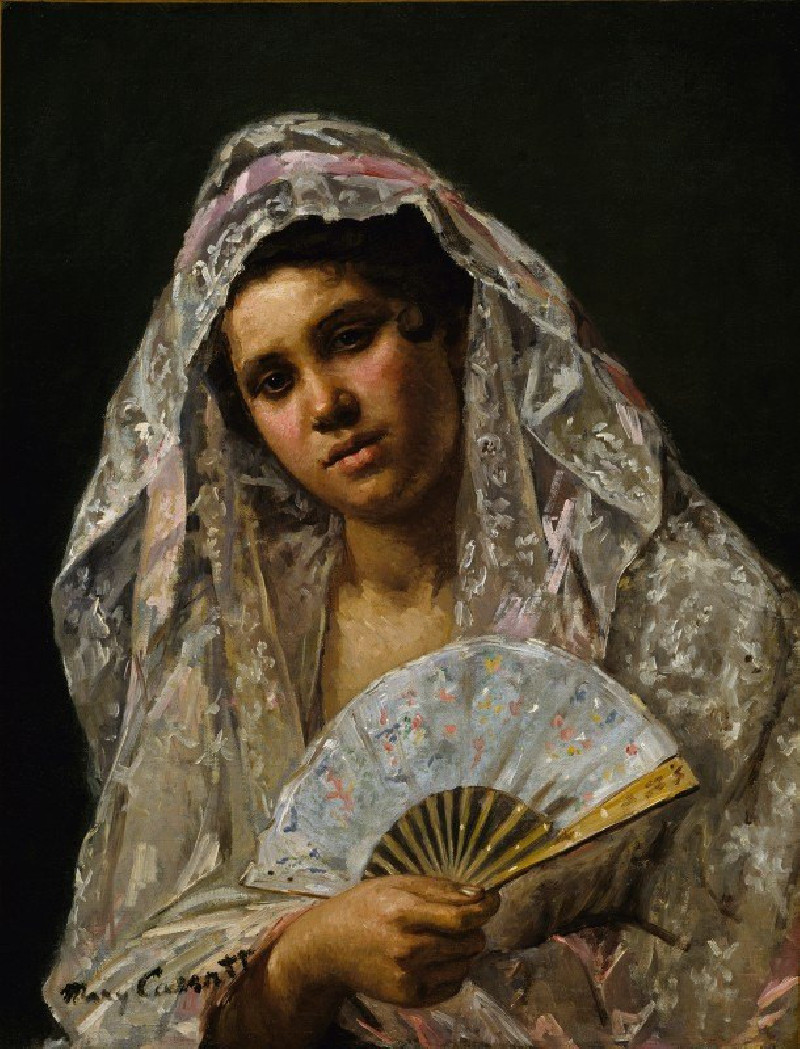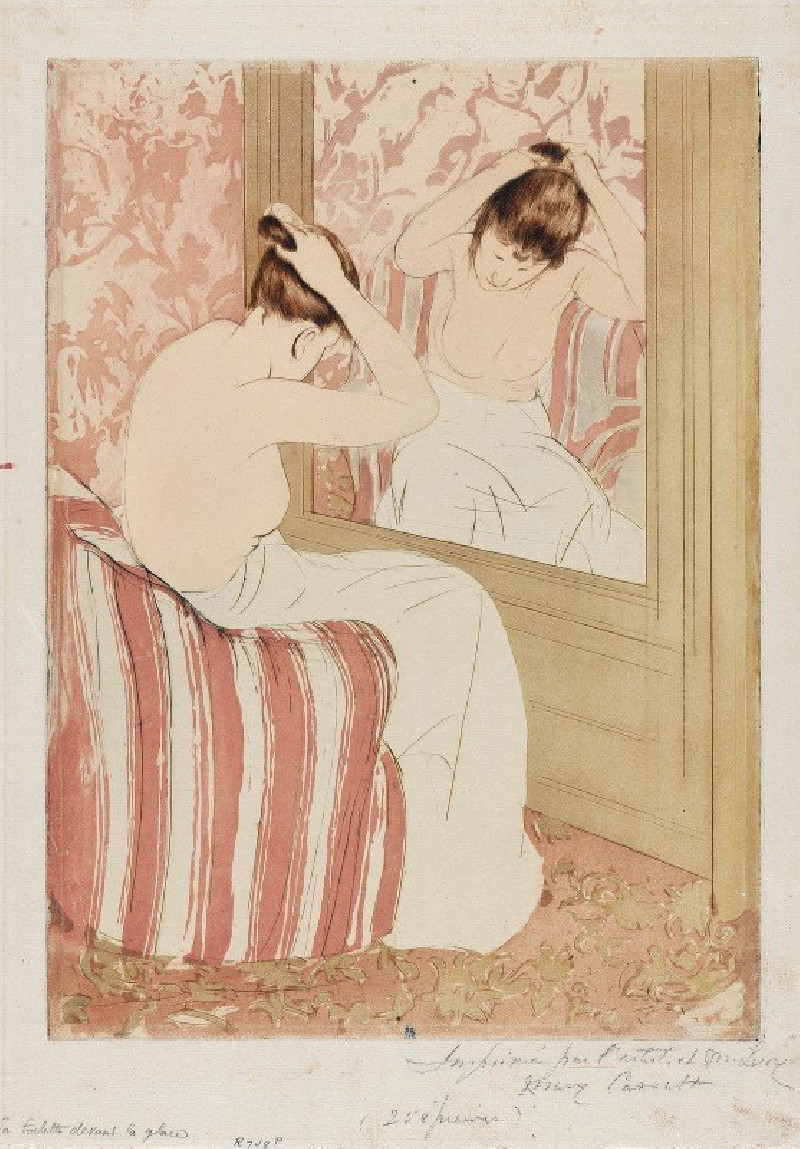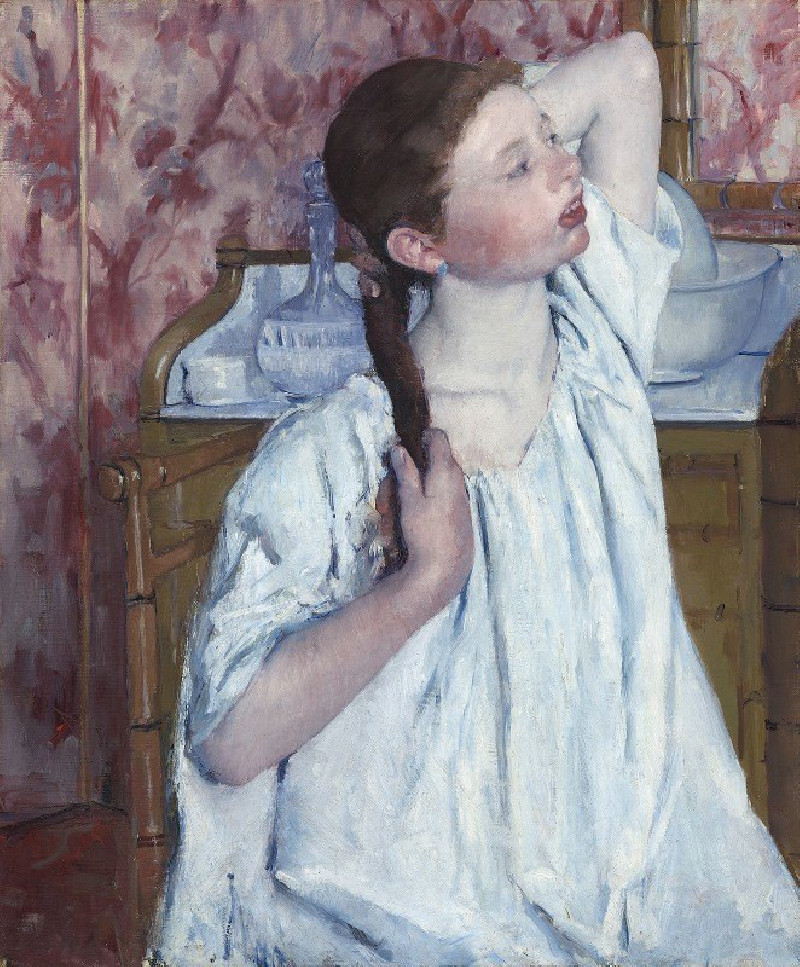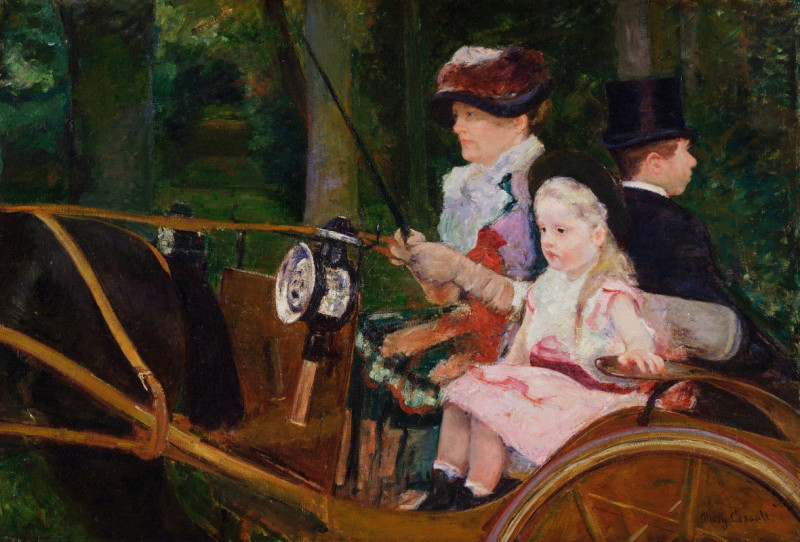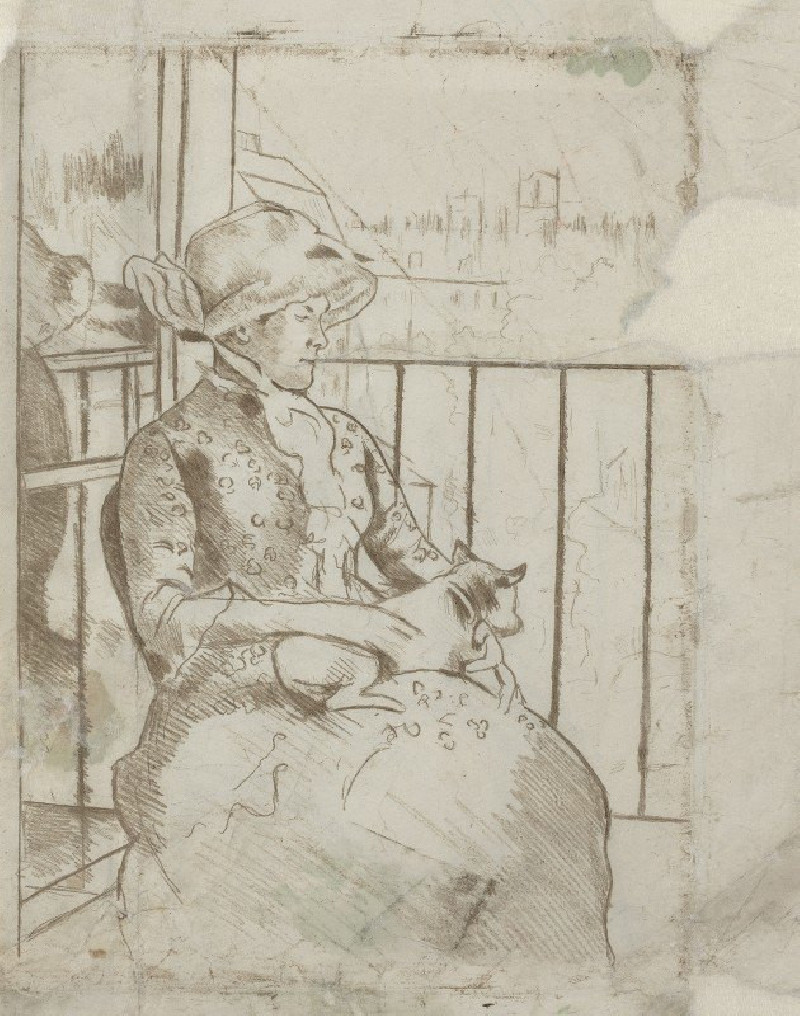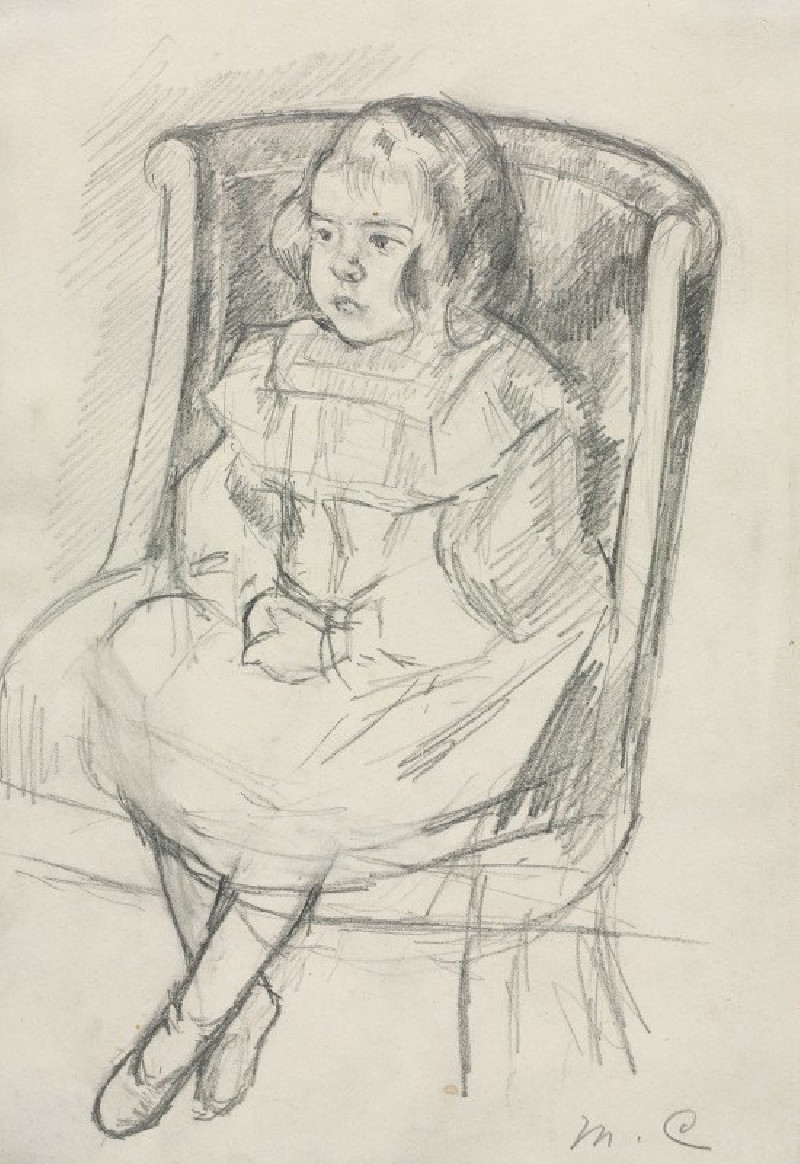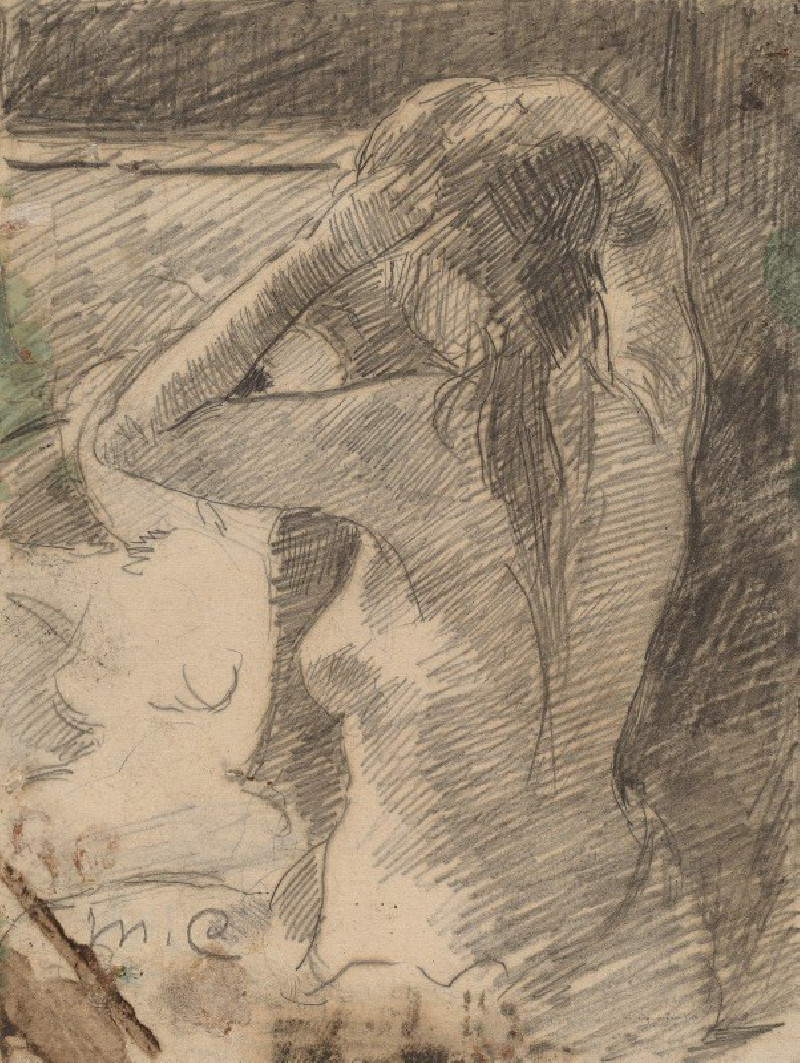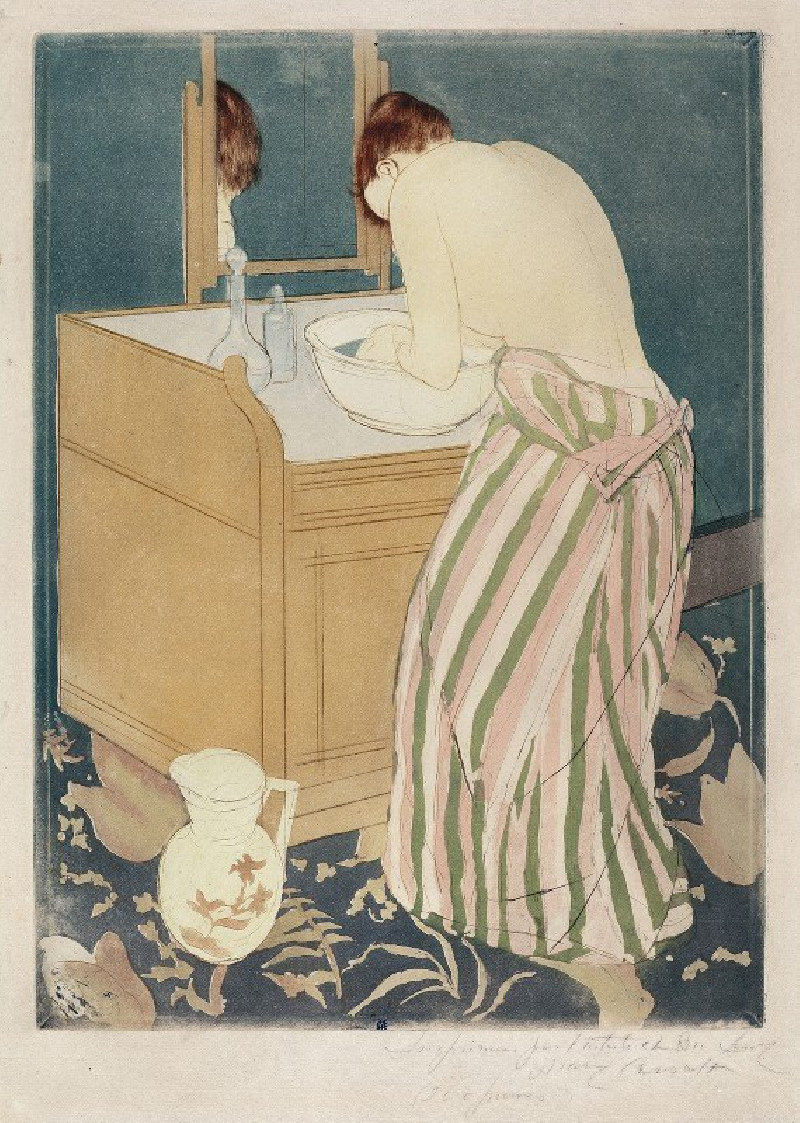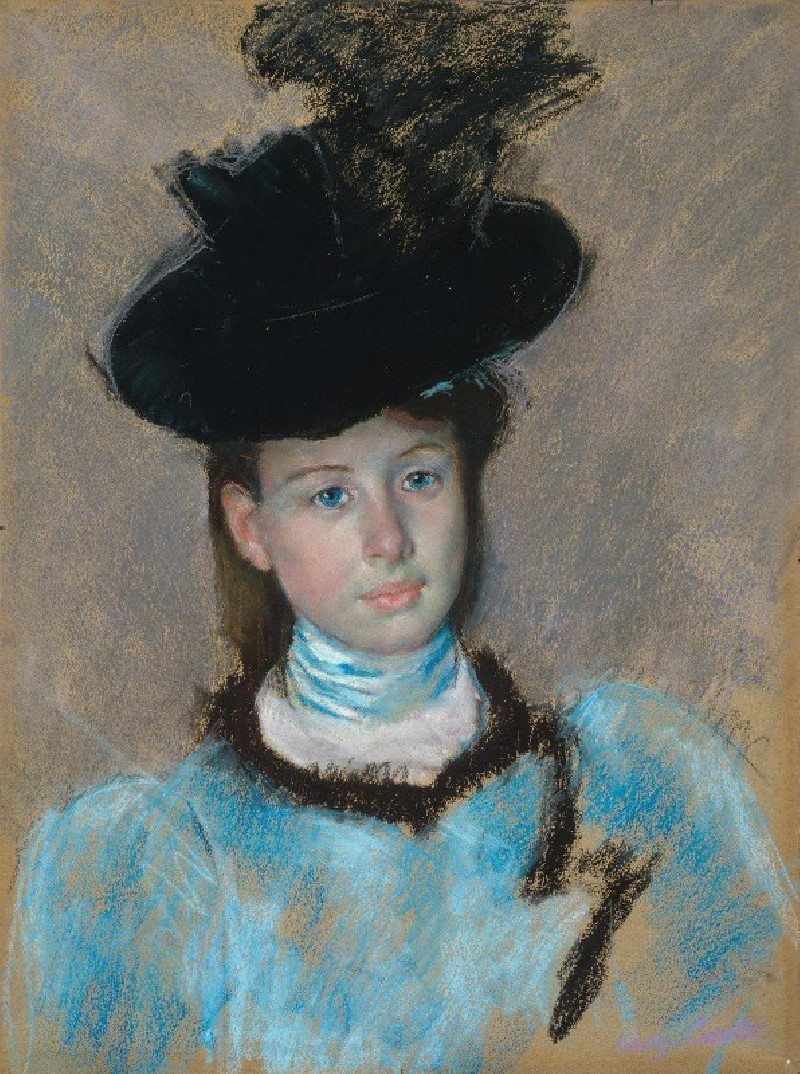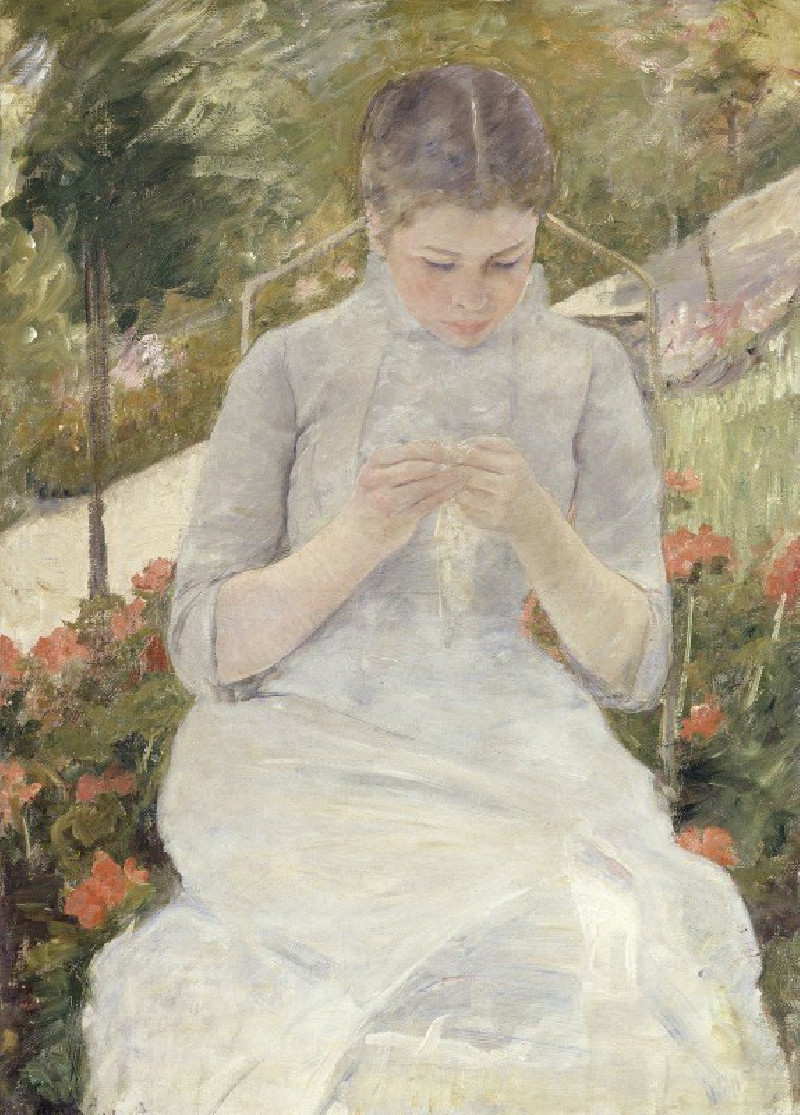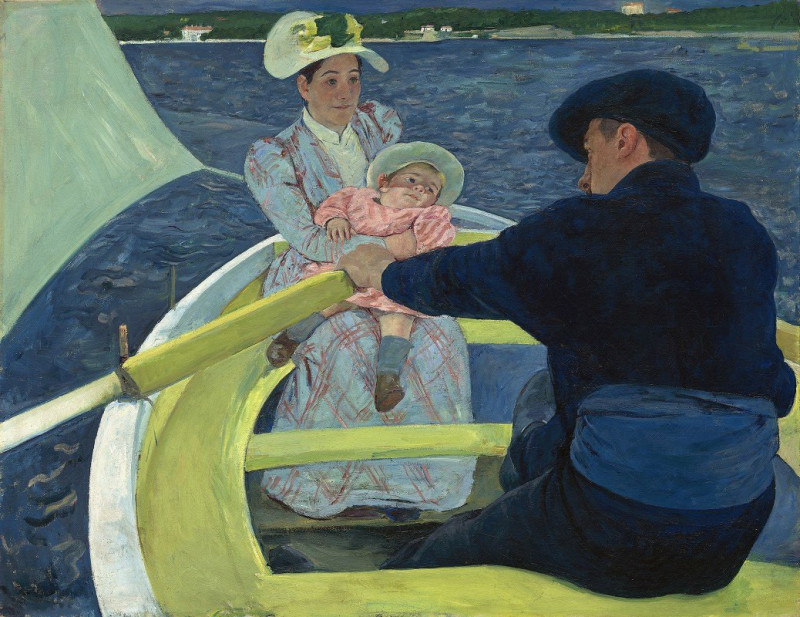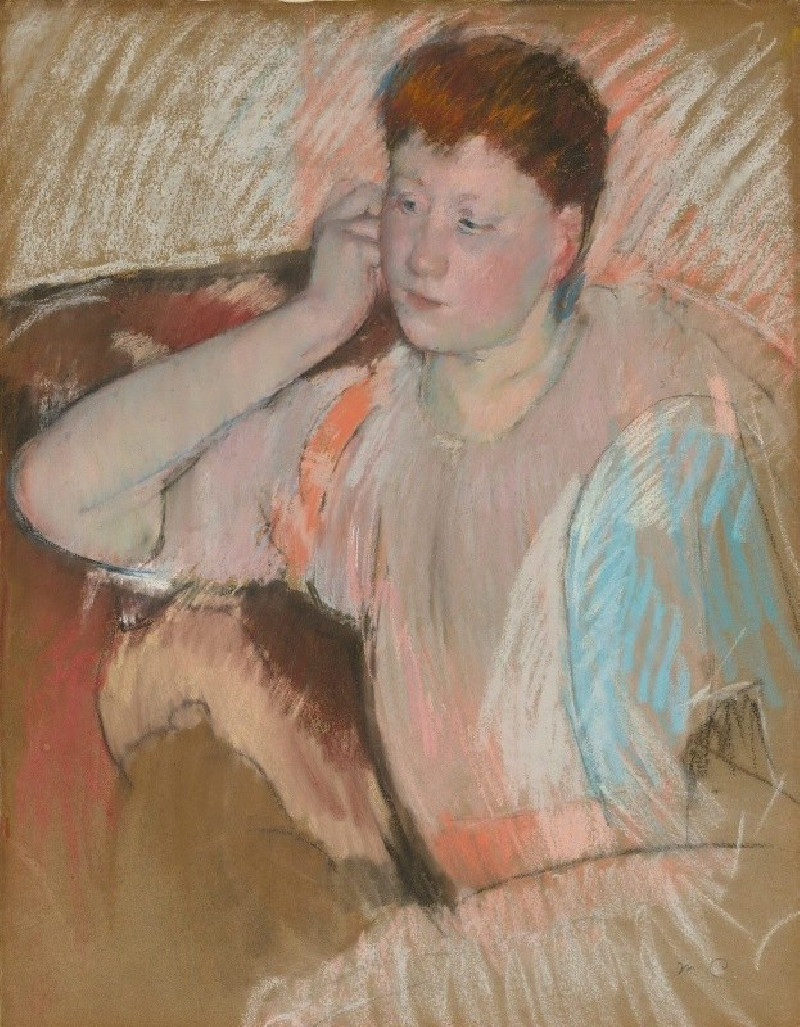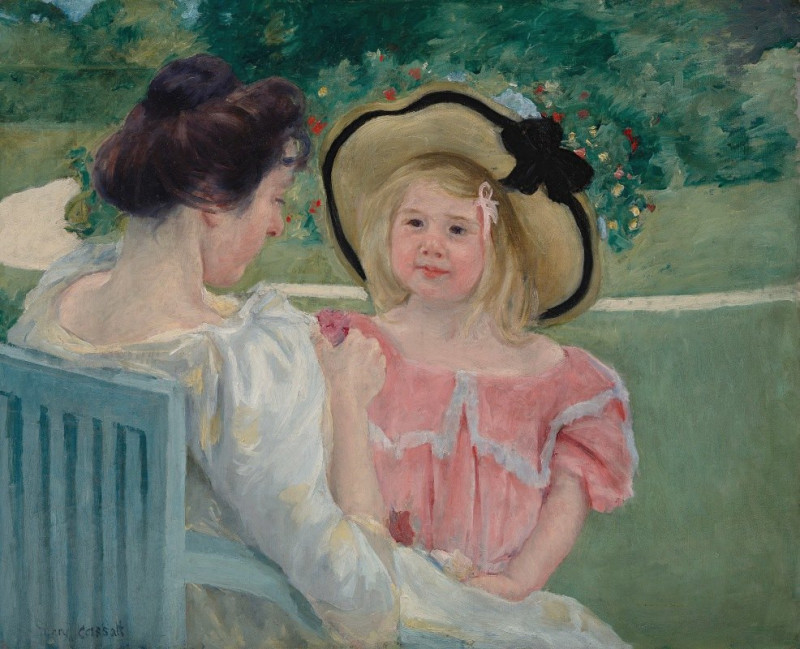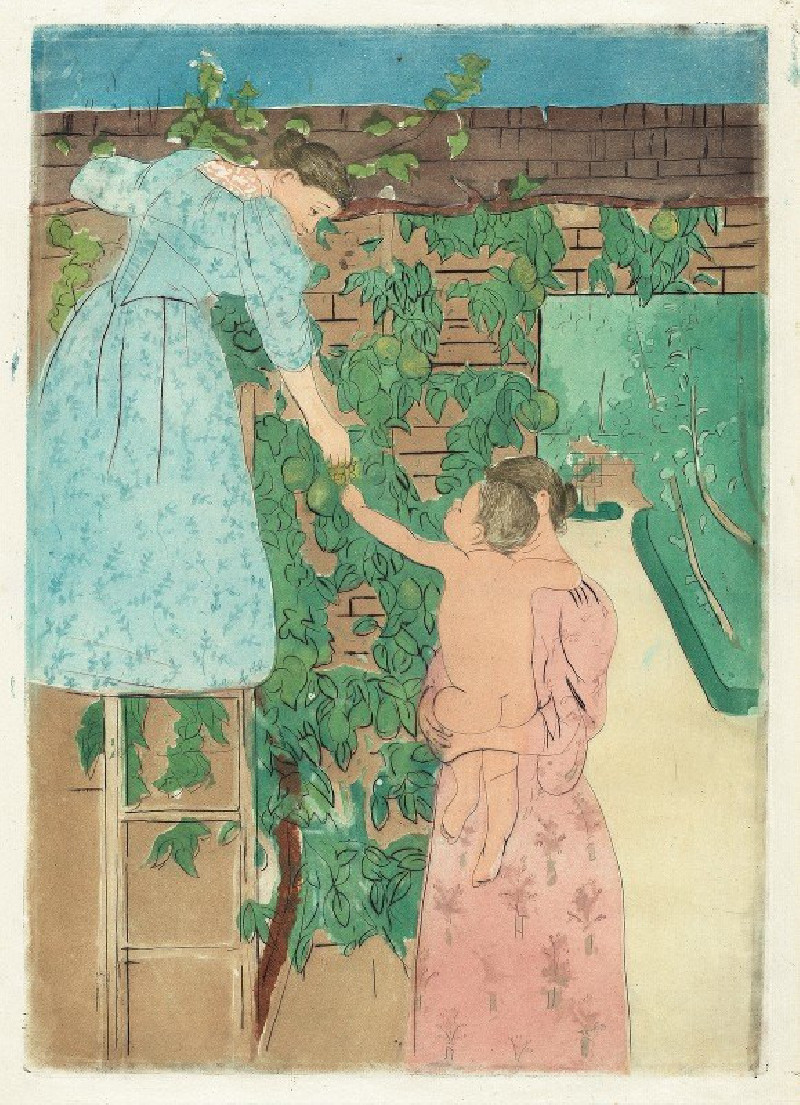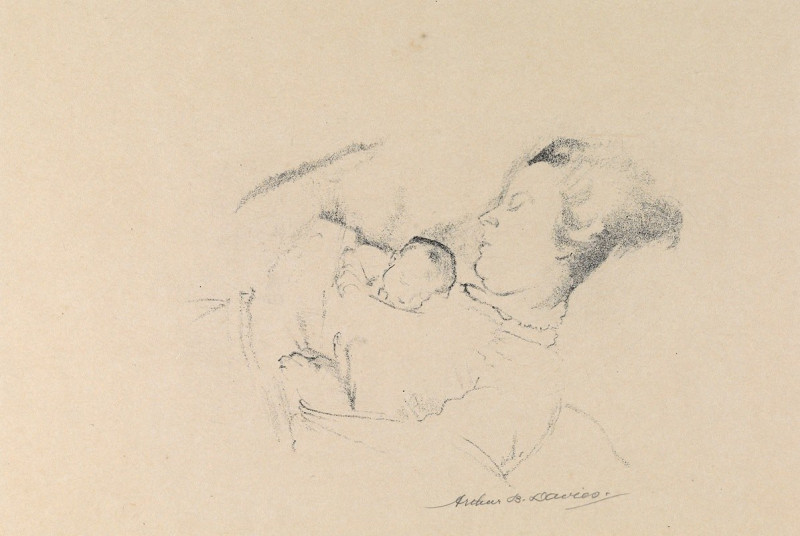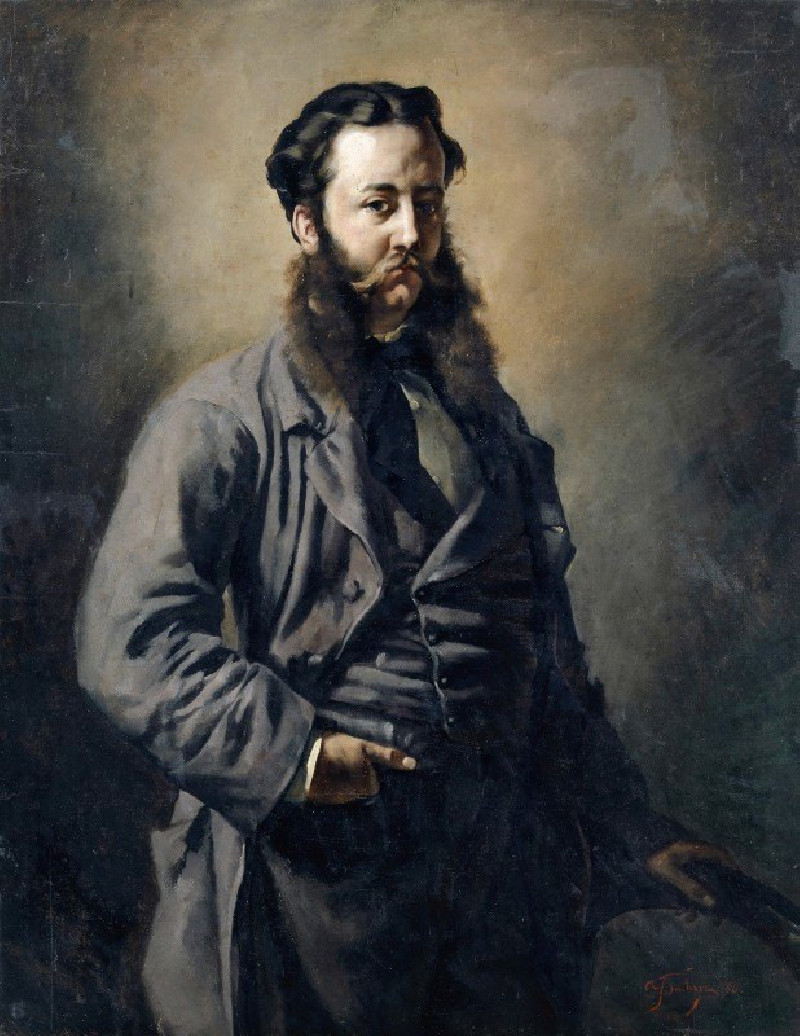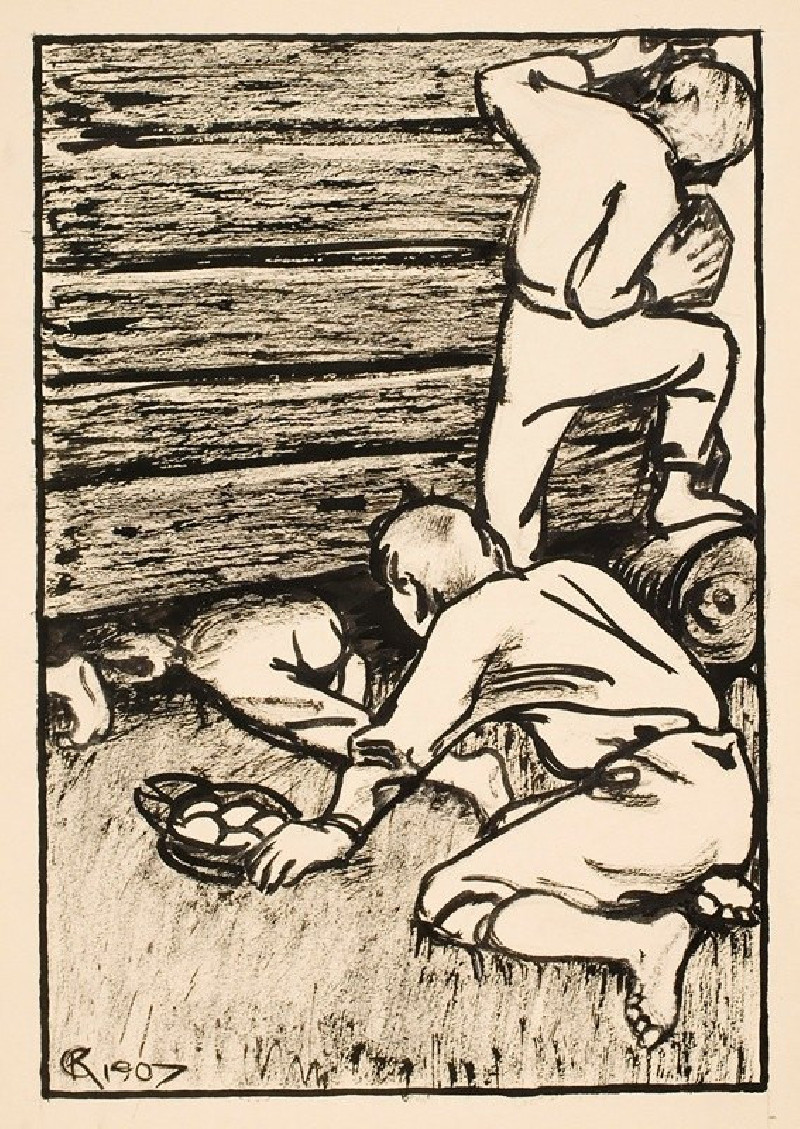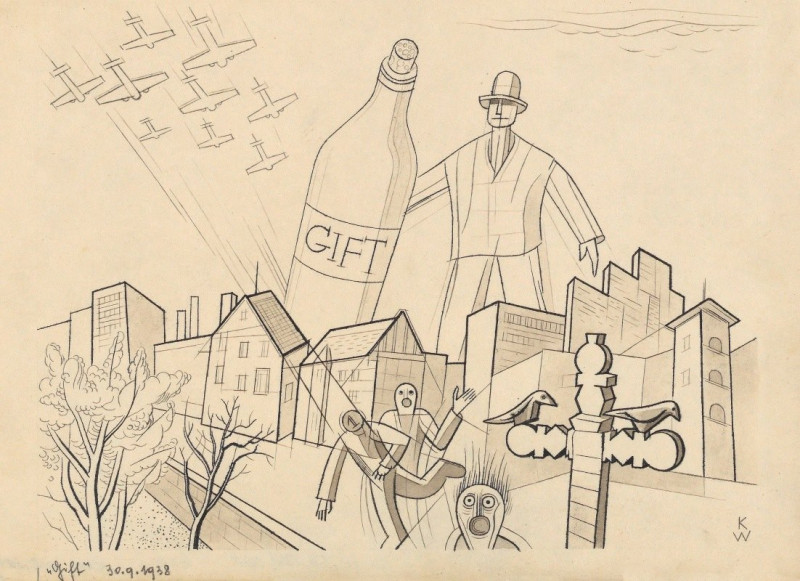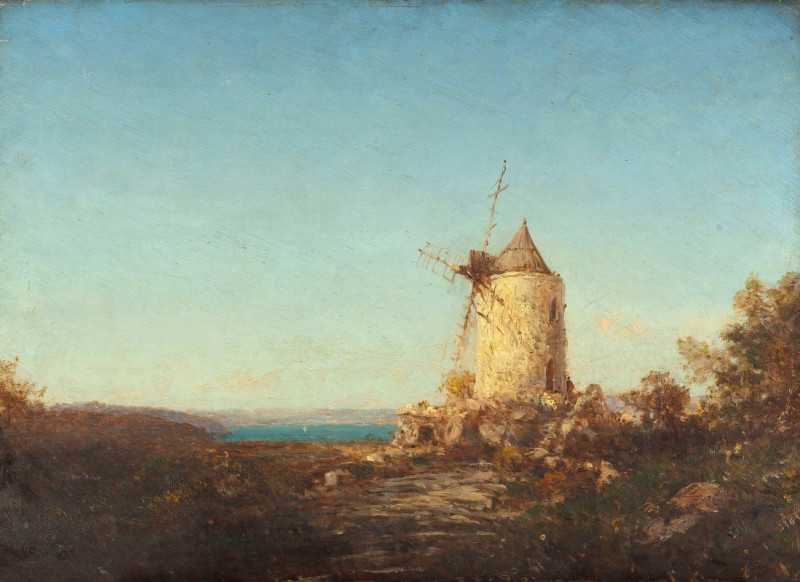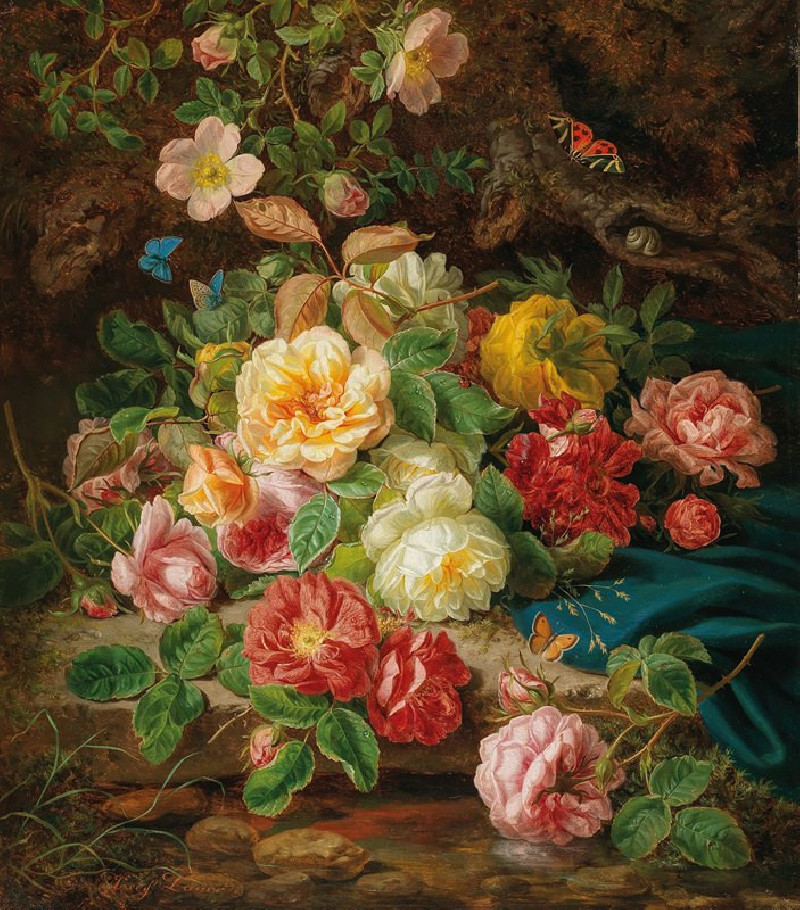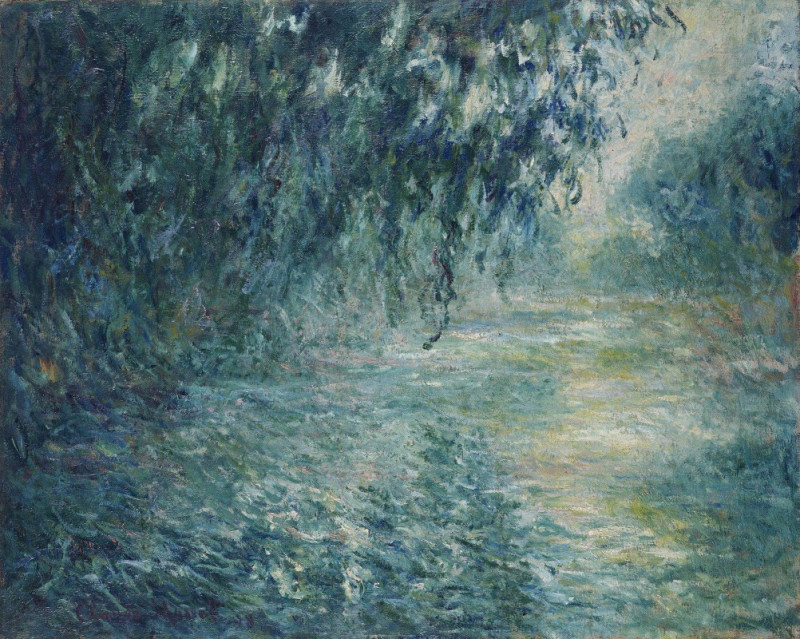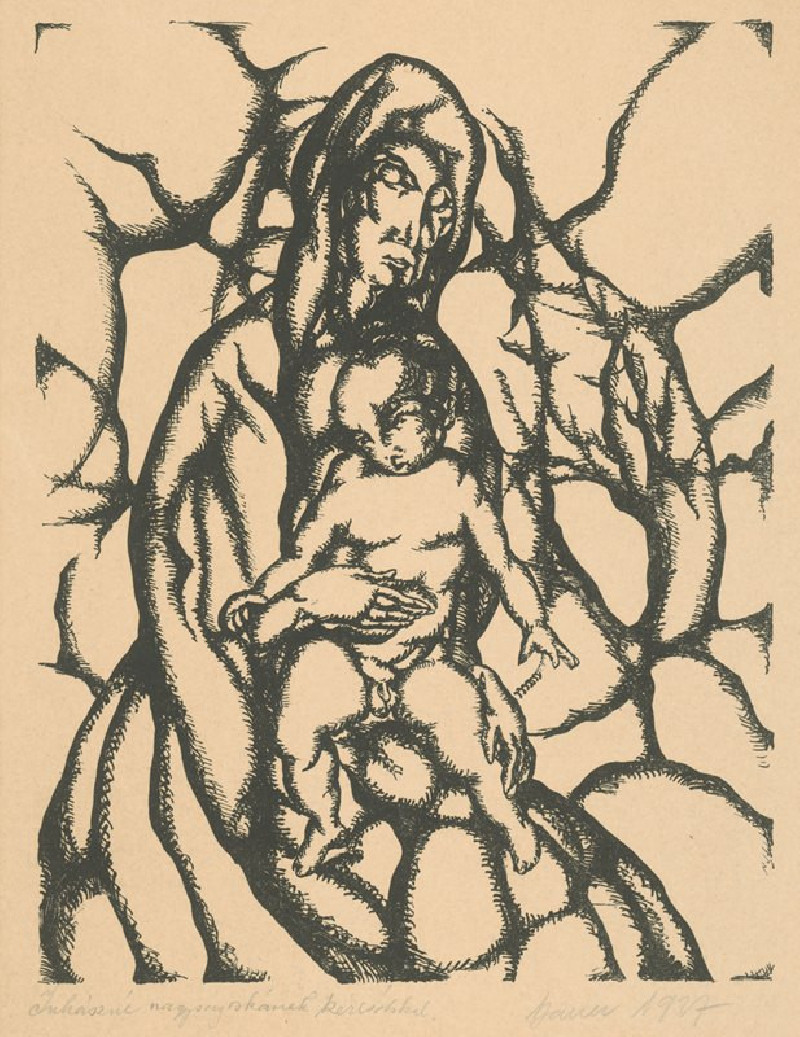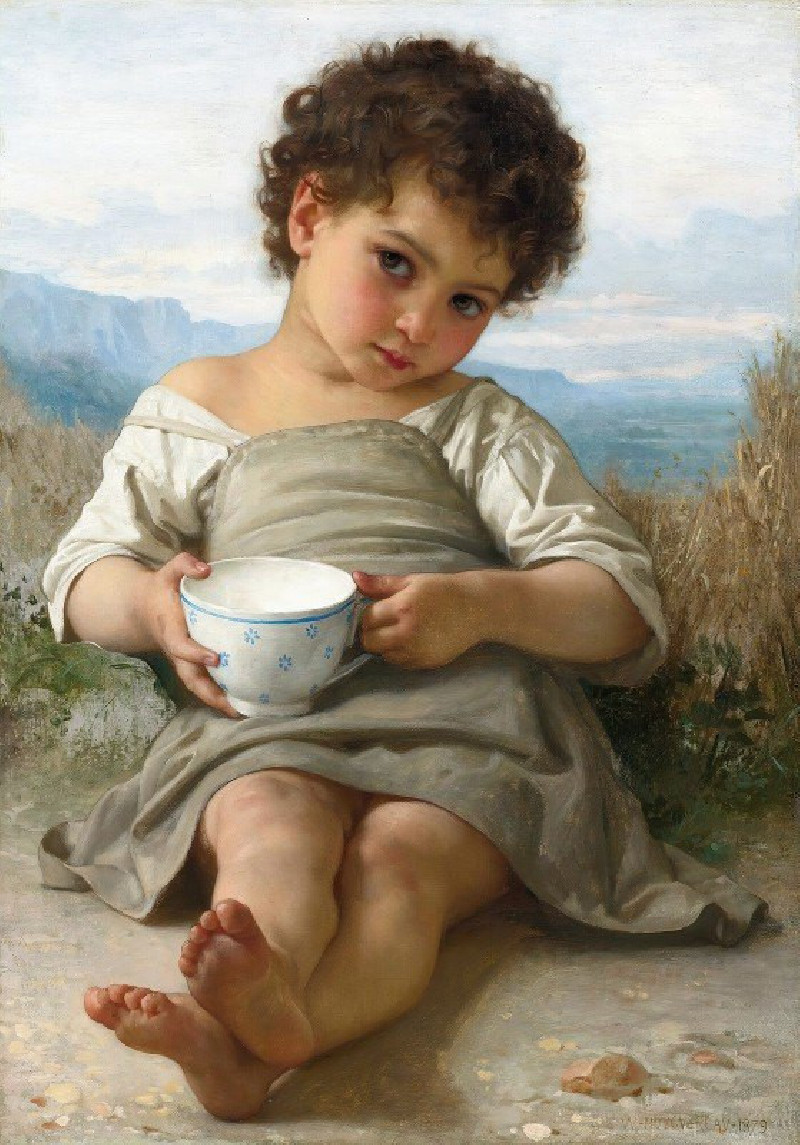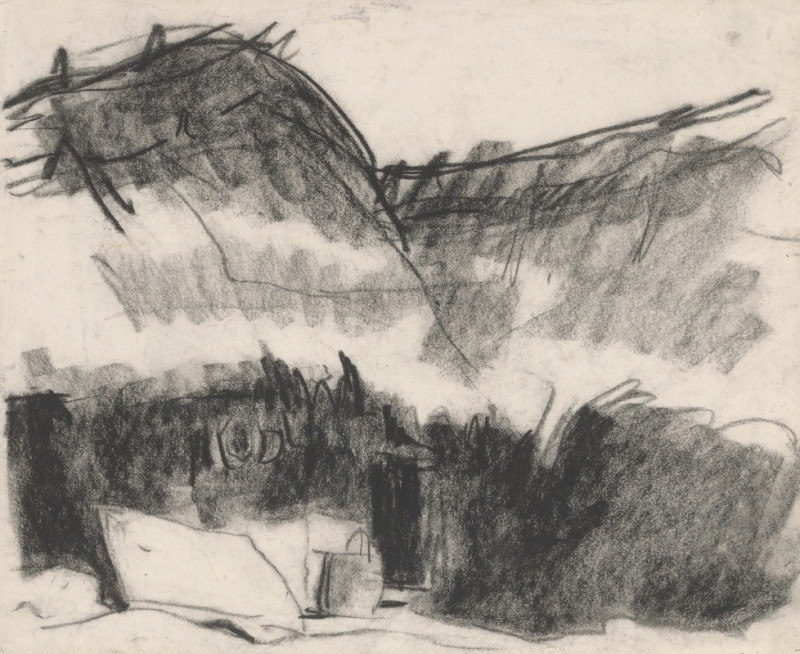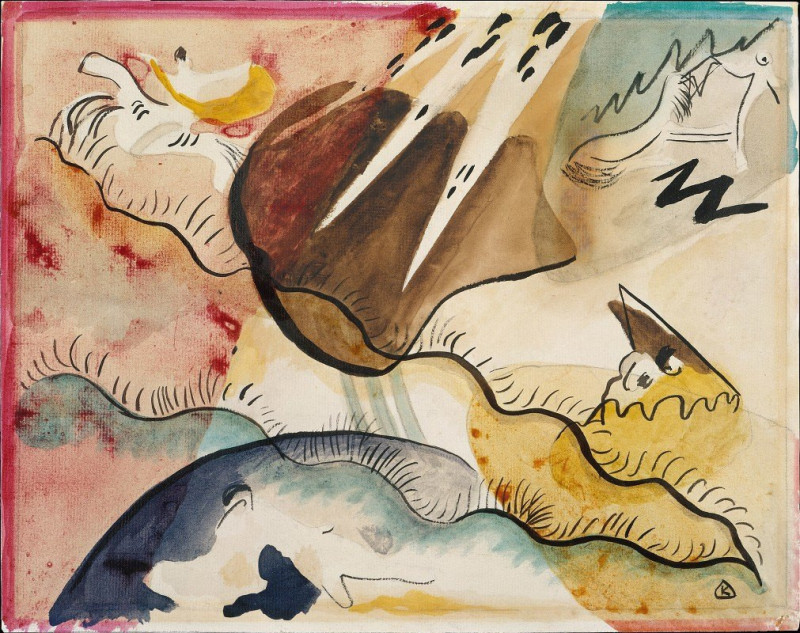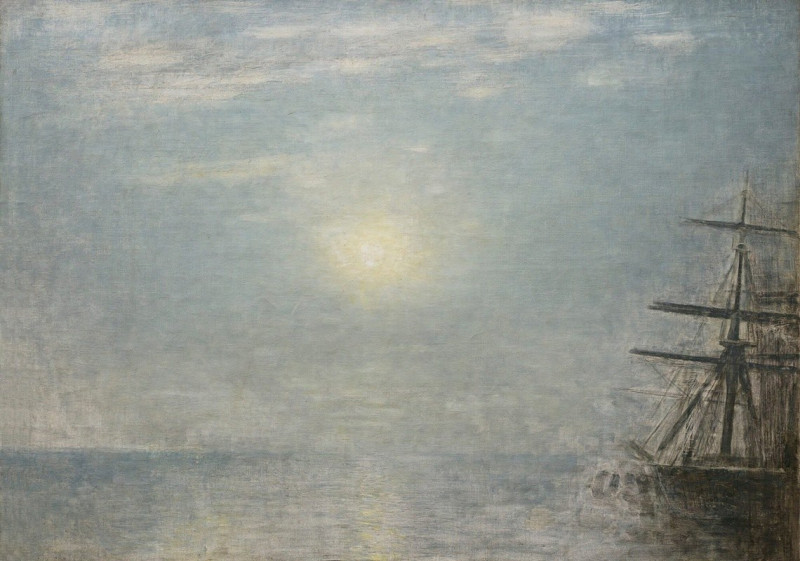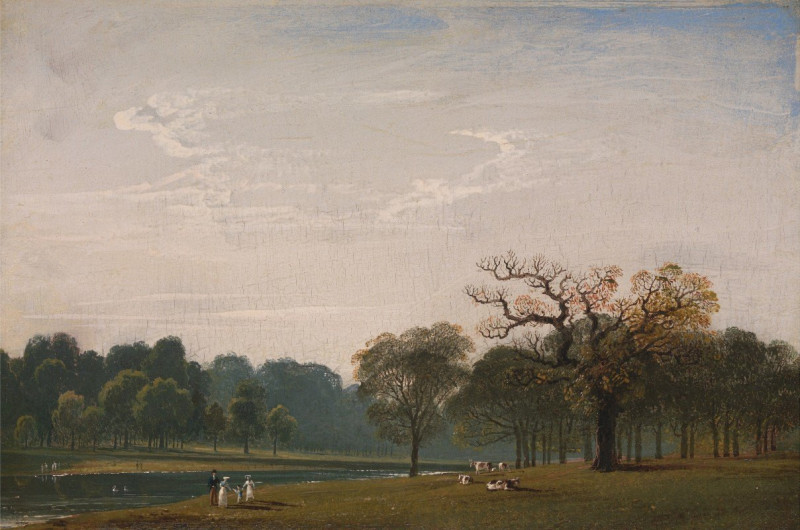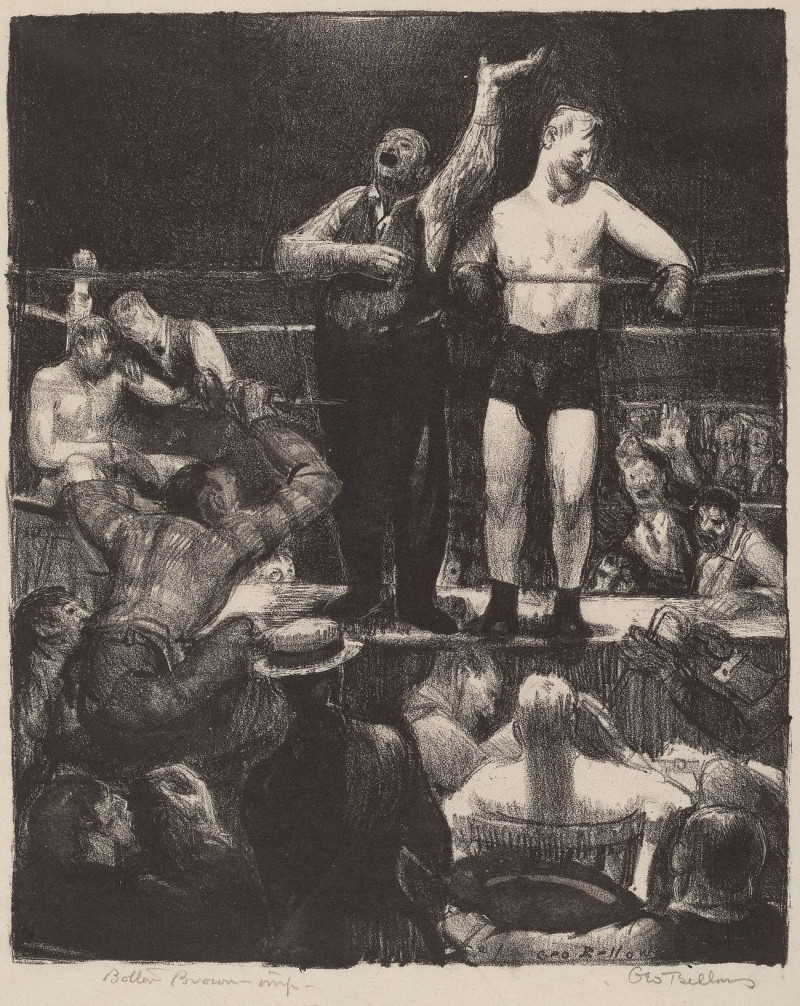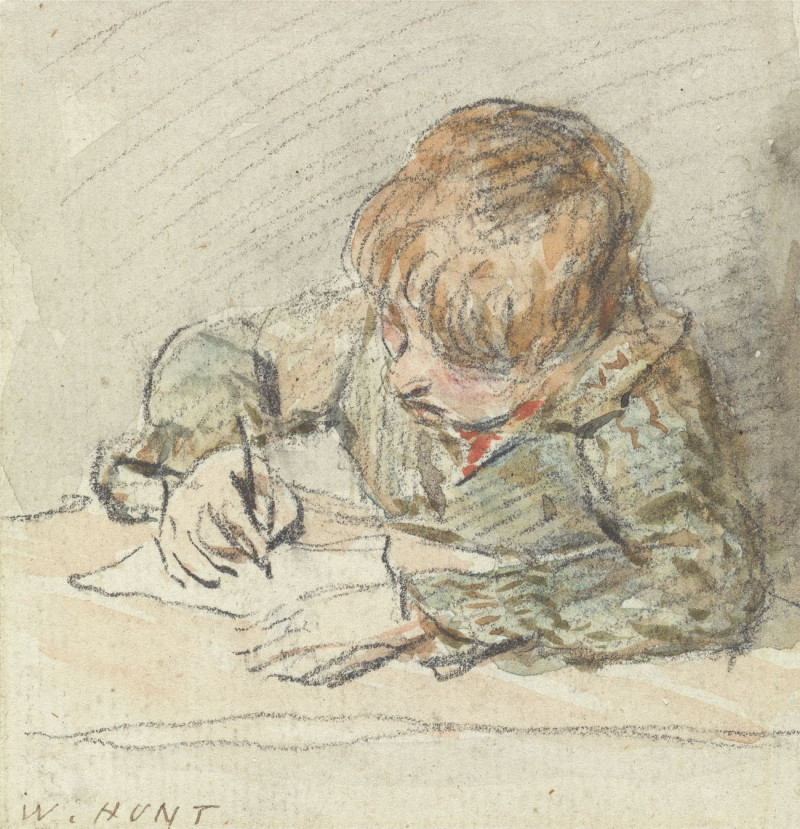Denise At Her Dressing Table
Technique: Giclée quality print
Recommended by our customers
More about this artwork
"Denise at Her Dressing Table" is a striking painting by Mary Cassatt that captures an intimate moment in the daily life of a young woman. The subject, Denise, is depicted seated at her dressing table, engaging in the personal act of grooming. Her attention is directed towards a handheld mirror, which she holds delicately in her right hand, examining her reflection closely. The mirror captures her focused gaze and draws the viewer's eye towards her face, highlighting her contemplative expression.Denise's attire consists of a loosely draped white robe with subtle pink floral patterns, adding a touch of delicacy and femininity to the scene. Her red hair is loosely pulled back, some strands softly framing her face, suggesting a casual, unguarded moment. The background features a larger circular mirror, reflecting her back and echoing the circular form of the handheld mirror, creating a visual continuity.Cassatt's brushwork is fluid and expressive, contributing to the immediacy and intimacy of the moment. The use of light and shadow, along with the soft color palette, enhances the quiet and reflective mood. The painting is not just a simple portrayal of a woman at her dressing table; it delves deeper into the themes of femininity, privacy, and the personal rituals of beauty. Cassatt, known for her profound depictions of women's lives, here beautifully captures both the external act and the internal reflection involved in this everyday ritual.
Delivery
Returns
Mary Stevenson Cassatt was an American painter and printmaker. She was born in Allegheny City, Pennsylvania (now part of Pittsburgh’s North Side), but lived much of her adult life in France where she befriended Edgar Degas and exhibited with the Impressionists. Cassatt often created images of the social and private lives of women, with particular emphasis on the intimate bonds between mothers and children.
She was described by Gustave Geffroy as one of "les trois grandes dames" (the three great ladies) of Impressionism alongside Marie Bracquemond and Berthe Morisot.In 1879, Diego Martelli compared her to Degas, as they both sought to depict movement, light, and design in the most modern sense.

